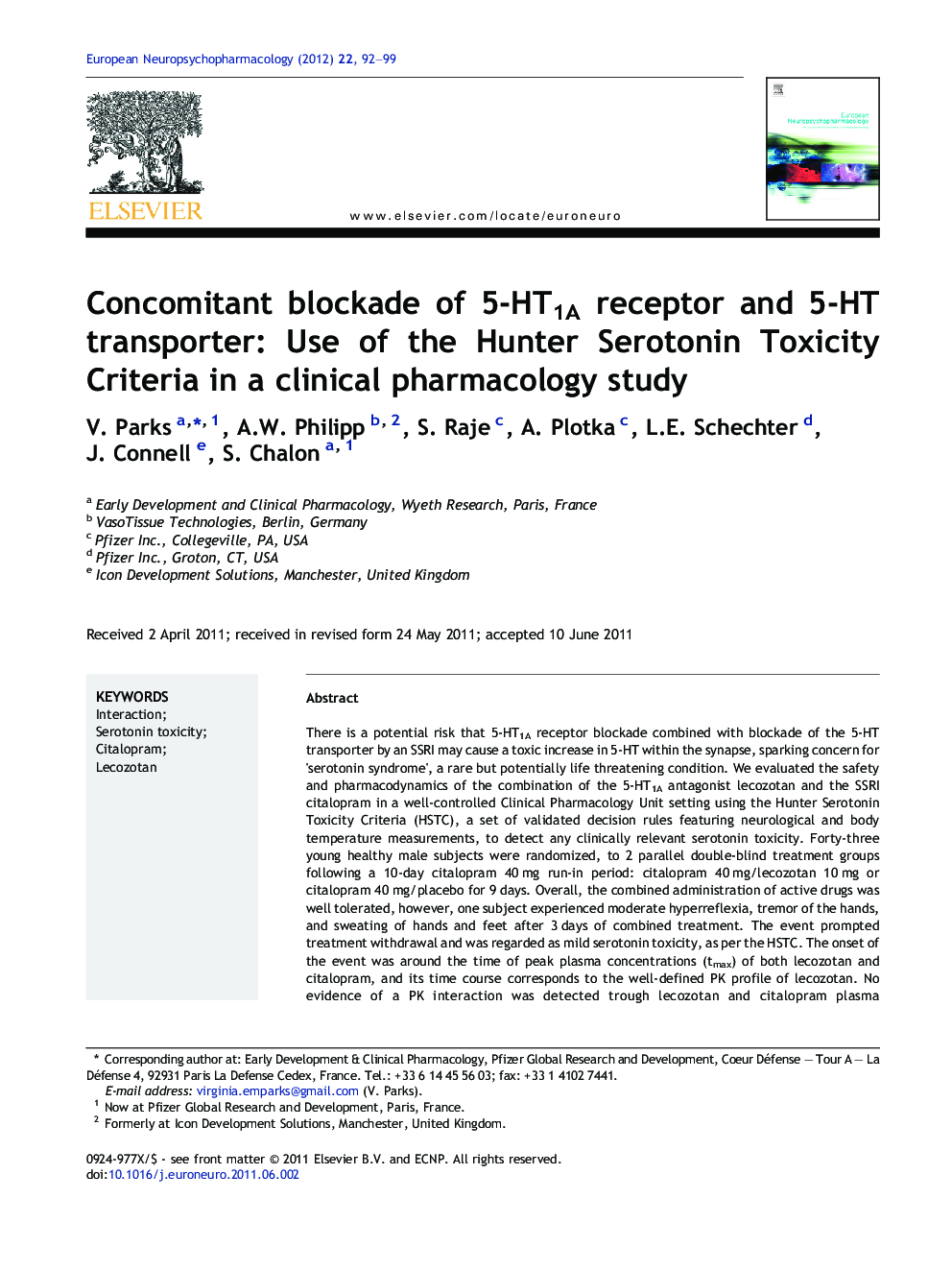| Article ID | Journal | Published Year | Pages | File Type |
|---|---|---|---|---|
| 319675 | European Neuropsychopharmacology | 2012 | 8 Pages |
There is a potential risk that 5-HT1A receptor blockade combined with blockade of the 5-HT transporter by an SSRI may cause a toxic increase in 5-HT within the synapse, sparking concern for 'serotonin syndrome', a rare but potentially life threatening condition. We evaluated the safety and pharmacodynamics of the combination of the 5-HT1A antagonist lecozotan and the SSRI citalopram in a well-controlled Clinical Pharmacology Unit setting using the Hunter Serotonin Toxicity Criteria (HSTC), a set of validated decision rules featuring neurological and body temperature measurements, to detect any clinically relevant serotonin toxicity. Forty-three young healthy male subjects were randomized, to 2 parallel double-blind treatment groups following a 10-day citalopram 40 mg run-in period: citalopram 40 mg/lecozotan 10 mg or citalopram 40 mg/placebo for 9 days. Overall, the combined administration of active drugs was well tolerated, however, one subject experienced moderate hyperreflexia, tremor of the hands, and sweating of hands and feet after 3 days of combined treatment. The event prompted treatment withdrawal and was regarded as mild serotonin toxicity, as per the HSTC. The onset of the event was around the time of peak plasma concentrations (tmax) of both lecozotan and citalopram, and its time course corresponds to the well-defined PK profile of lecozotan. No evidence of a PK interaction was detected trough lecozotan and citalopram plasma concentrations analysis. The utility of the HSTC in detecting the non-discrete group of symptoms commonly referred to as “serotonin toxicity” was demonstrated in this clinical pharmacology study combining two 5-HT agents in a clinically controlled setting.
